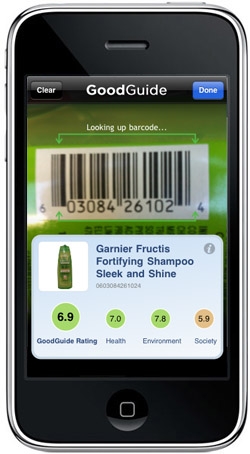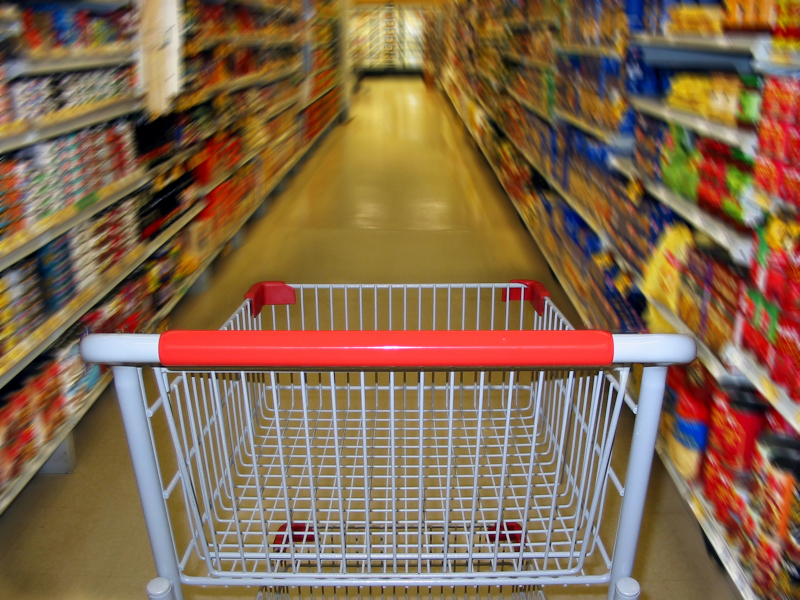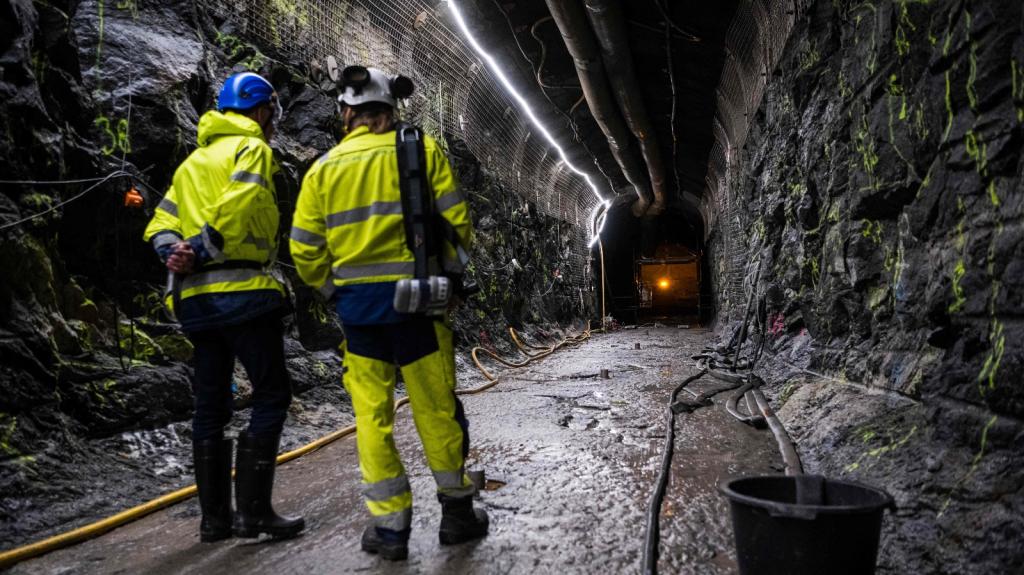Last year, a colleague suggested I check out a startup with the intriguing, and so-very-California, name of Tao It.
Founded by Berkeley professor Dara O’Rourke, Tao It aimed to tap a multiplicity of databases to rank consumer products according to their health and environmental attributes. The idea: If people could instantly learn online whether there are bad chemicals in their food and other goods, they would start buying green, putting pressure on companies to make more environmentally friendly and healthier products.
When Tao It emerged from stealth mode, it was rebranded with the blander but apparently more marketable moniker GoodGuide. An iPhone app followed that let you type in the name of a product to check its rating as you shopped.
I gave it whirl a few times but tapping away on a tiny keyboard at a crowded grocery story with a child in tow grew tedious and GoodGuide soon got pushed to the iPhone graveyard, that last screen where little-used apps languish.
 No longer. Thanks to the app’s new built in barcode scanner, GoodGuide has jumped to the home screen. Click on “scan,” point the iPhone at, say, a bottle of organic chocolate sauce, and the app uses the iPhone’s camera to read the barcode and deliver instant feedback on the product’s “health performance,” “environmental performance” as well its its maker’s “social performance.
No longer. Thanks to the app’s new built in barcode scanner, GoodGuide has jumped to the home screen. Click on “scan,” point the iPhone at, say, a bottle of organic chocolate sauce, and the app uses the iPhone’s camera to read the barcode and deliver instant feedback on the product’s “health performance,” “environmental performance” as well its its maker’s “social performance.
“Barcode scanning is critical for us,” O’Rourke, associate professor at Cal’s Department of Environmental Science, Management and Policy, told me in an email. “This moves us closer to our goal of providing full environmental, social, and health information to consumers right at the moment they make purchasing decisions.”
GoodGuide to date has rated 63,000 products — from food and household chemicals to personal care items to toys — according to various criteria, including how transparent a company is about disclosing information. GoodGuide’s scientists, based in San Francisco, employ a extensive methodology to devise the ratings, which is detailed here.
After spending a few days scanning and shopping, I have to agree that it’s a game changer, even for someone like me, who lives in a locavore-loving, farmer-marketing, in-Alice-Waters’ name-we-pray town.
To test my hypothesis as the annual American holiday glutton-fest approaches, I put the GoodGuide scanner app to the “koodie” test at Berkeley Bowl, one of the local temples of conspicuous culinary consumption.
A koodie, as I learned from a tweet from Grist executive editor Russ Walker, is a pint-sized foodie, a child with an unusual awareness and interest in high-quality food and ingredients.
I just call him Gabe, my 11-year-old son, who along with his friends at Malcolm X Elementary are the children of the Food Revolution, schooled in organic gardens, taught to shop at thrice-weekly farmers markets — organic only, thank you — and parented by the food police.
Which is all wonderful of course, but does have its downsides — like when a koodie plants himself in an aisle of Berkeley Bowl and refuses to move until he has compared the ingredients of two brands of cereal bars needed for class snack, rooting out culinary incorrectness.
Now instead of arguing about whether the $14 bottle of organic maple is really that superior to the $8 version, we could just scan ‘em all and let GuideGuide settle the score for us.
Lured by the chance to play with dad’s iPhone, Gabe soon was scanning everything in the store, including those items that escape his usual scrutiny.
First up, Ben & Jerry’s Phish food, a favorite. “Uh, dad, this doesn’t look good,” he said, showing me the screen. GoodGuide gave the fatty ice cream only 2.2 points out of 10 for the health rating. (Ben & Jerry’s did score high, not surprisingly, on environment and “society,” earning Phish food an overall ranking of 5.3.)
Next Gabe pointed the iPhone at a pint of Haagen-Dazs “all natural” vanilla — which we buy frequently but which scored a bottom-of-the-barrel rating of 0.6 from GoodGuide for high saturated fats, high cholesterol, and high sugars. (We also learned learn that, “the company that makes this product has an above average score in toxic or hazardous spills” but a below average score for energy use.)
Next time we’ll check out the soy ice cream.
Gabe quickly learned how to work the GoodGuide system. “Dad, let’s check out the chocolate syrup,” he said, grabbing a couple bottles of a product we almost never buy.
No surprise that Santa Cruz Organics smacked down Smuckers. Brandishing the iPhone, he now had the statistical proof to argue why we should buy chocolate syrup. (Press a button in the app and you can email your findings to friends.)
Alas, GoodGuide could not resolve the great organic maple syrup debate of ’09. Neither product showed up in the company’s database.
Scanning can be a hit-or-miss proposition. Many products did not register when scanned or only did after scanning a few times. To get a detailed explanation of the ratings you still need to go to GoodGuide’s website.
Still, it’s a powerful tool. And once the koodies get iPhones of their own, watch for them to be scanning the groceries you bring home, calling you to account for crimes against nutrition.
“The mobile space is where I think we have the most potential to really change the marketplace,” says O’Rourke. “As more and more people use our mobile apps, I believe more retailers and manufacturers will realize that a new world of transparency is here, and that they might as well be more transparent about the full impacts of their products and supply chains.”
And just in time for the holidays, on Dec. 4, GoodGuide will be adding 1,000 new toys to its database, analyzing the must-haves of the season.
Scan the Zhu Zhu hamster at your own risk.


